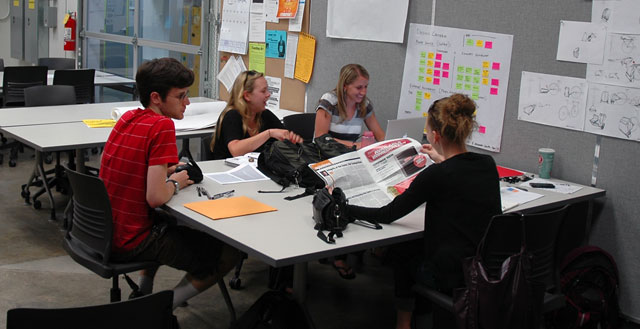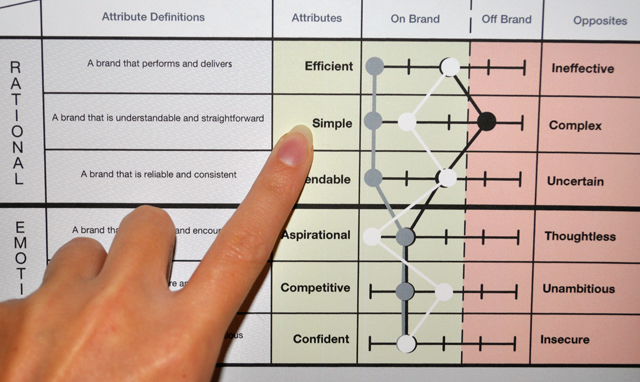Building a New Brand

Setting the Foundation
With my background in Graphic Design, I have designed visual identities for existing brands, but I’ve never had the opportunity to develop the framework for a new brand from the ground up. At SCAD, I was able to work with five other students from different disciplines in a sponsored collaborative design class to build a new brand for a national client.
The new brand we helped create will launch in early 2012. Three other classes at SCAD have been building off our research and brand foundation — an Industrial Design class created prototypes for the physical products that are part of the brand, a Service Design class worked on training/sales support and interaction design, and a Graphic/Interior Design class finalized the store design and brand standards manual. I can’t give away too much about the nature of the brand itself until after the launch, but I can discuss more about our process.
Our task was to develop rational and emotional brand attributes, create a brand value proposition and design the brand identity framework strategy. This framework included the brand name, logo, short and long-term design strategy of the new product line, as well as the retail store experience and marketing techniques. The scope of the project was daunting at first, considering we had about 8 weeks to conduct research, pinpoint design opportunities and deliver our final presentation to the client.
During our initial meeting with our client, the VP of Marketing for the company, we lead a brainstorming session to decide on three rational and three emotional brand attributes. After the meeting, my classmates and I developed definitions for these attributes to give them more specific meaning for the brand.

Brand Design Analytics
We looked at the competition, performed passive on-site observations, and created a SWOT analysis. We then designed and executed a contextual research study, interviewing target customers as well as conducting product name and color market testing. We used the semantic differential research method created by Charles Osgood in order to match participants’ attitudes towards potential names and colors on a scale against the brand attributes.

Presentation
Our ethnographic research showed us opportunities for the new brand to create value for its customers through design. We first presented these findings and the accompanying design strategy to our client in late May 2011. The meeting included the VP of Marketing as well as brand managers, a sales director and product management director. Based on the feedback we received at this meeting, we refined the design strategy and presented to a larger audience two weeks later. Our final presentation was pitched live to our client contact and simultaneously broadcast to executives and upper management in three locations.

Related posts: